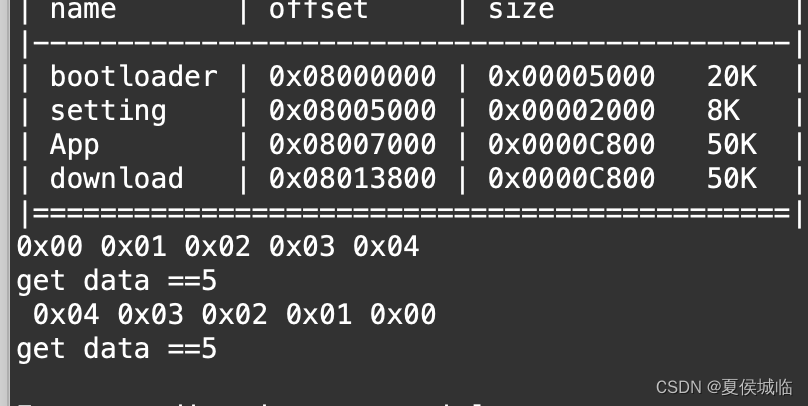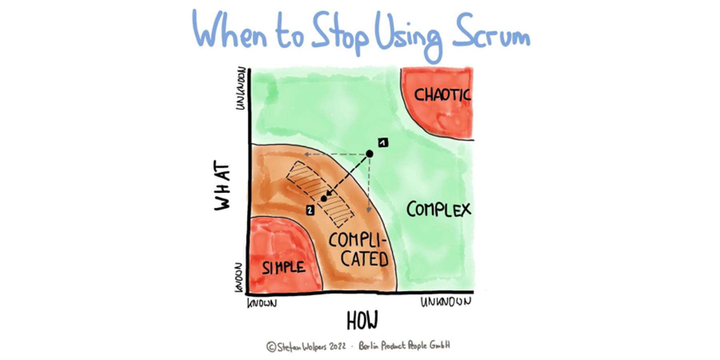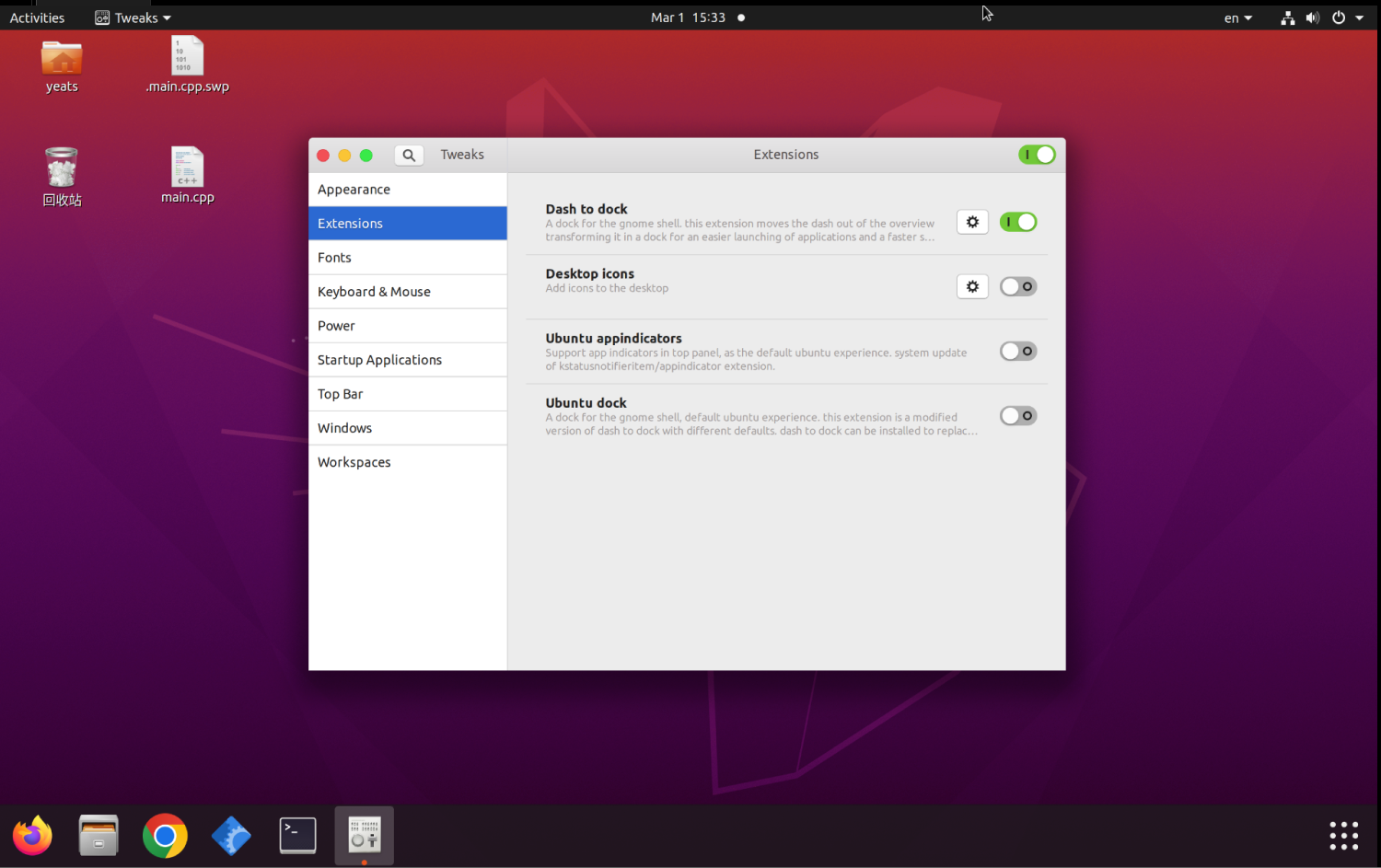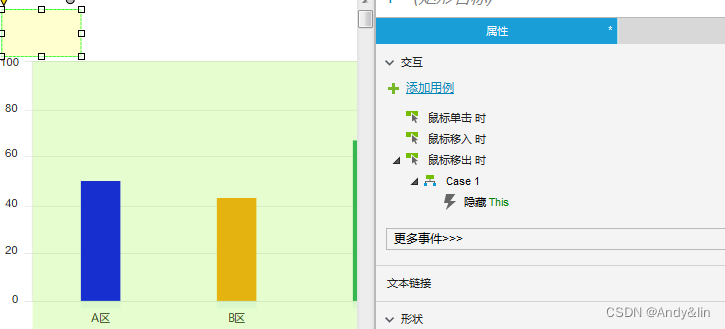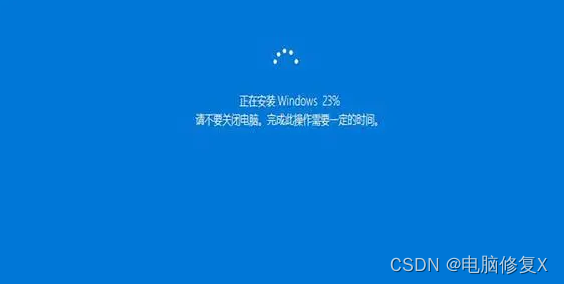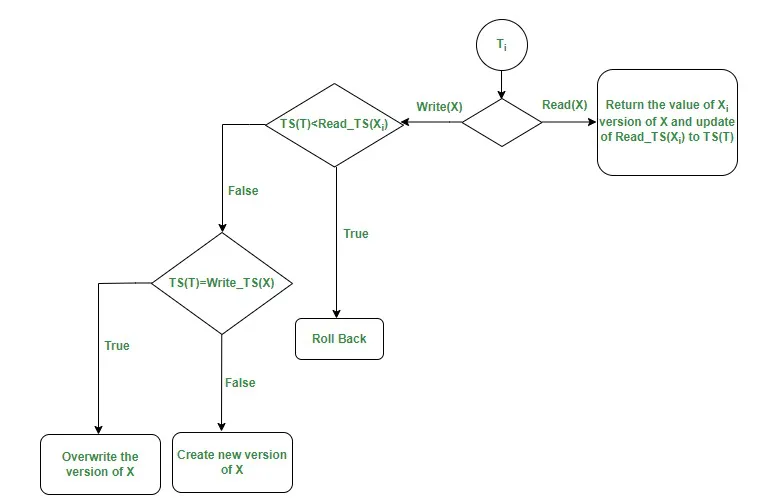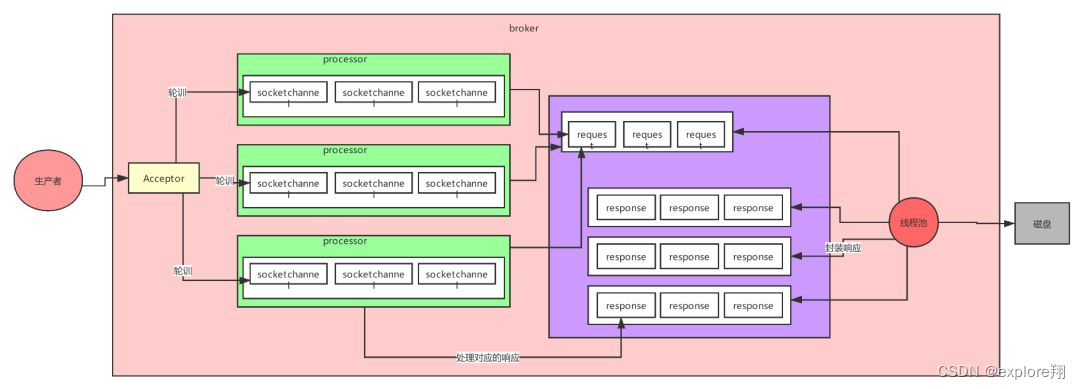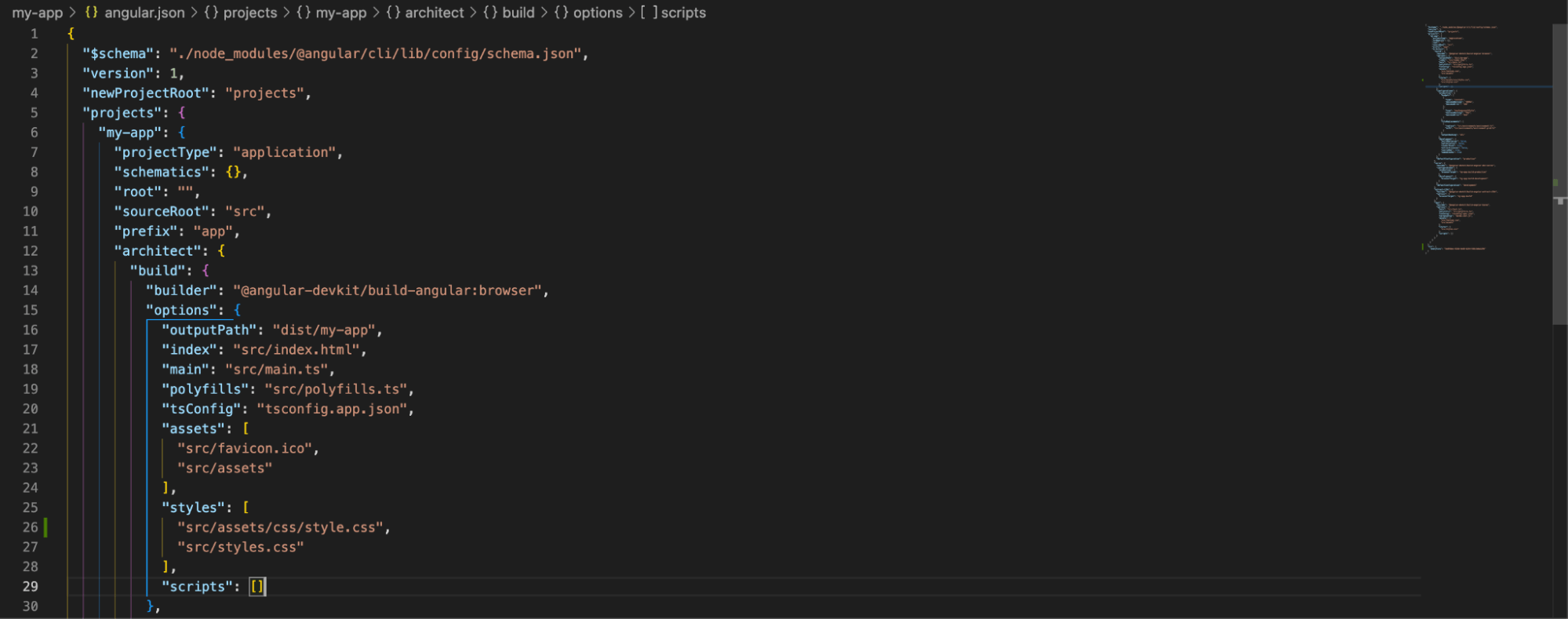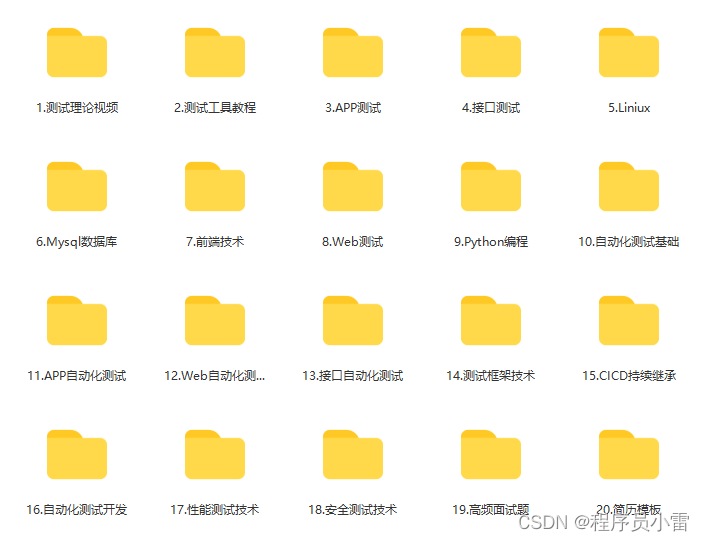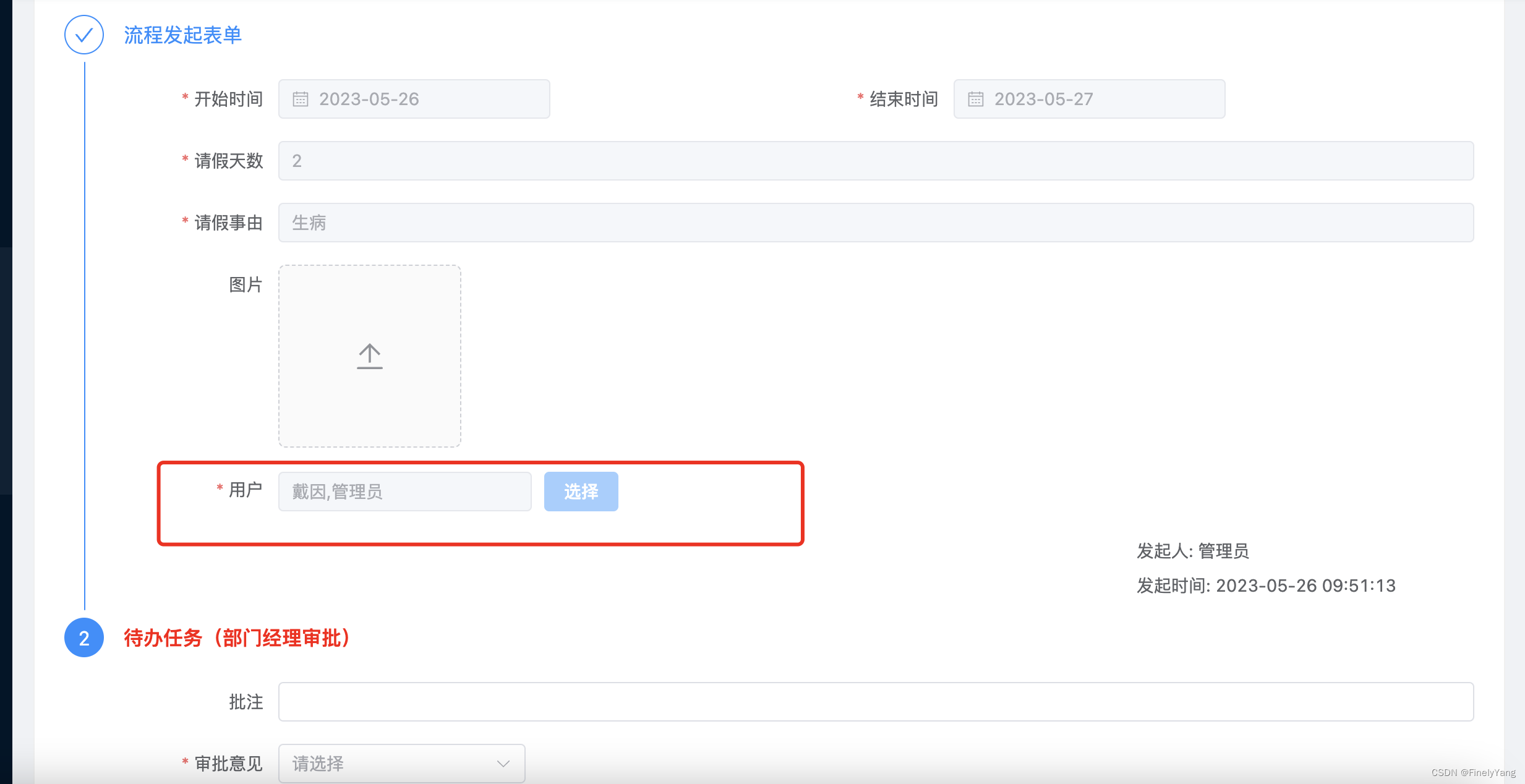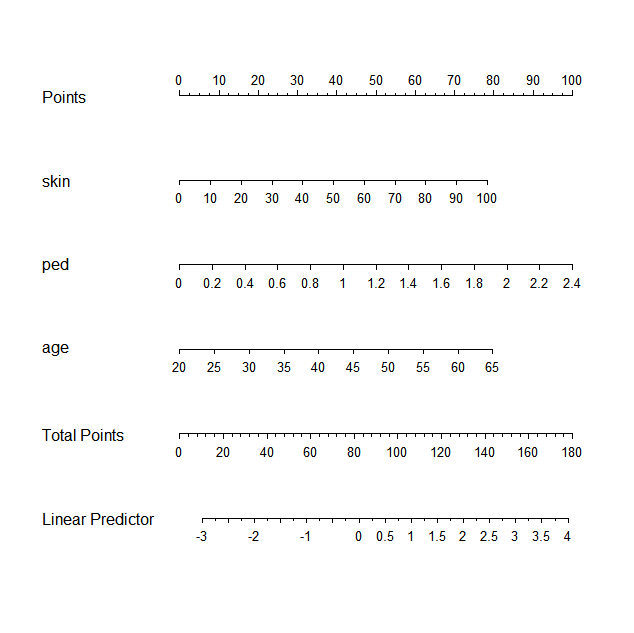蓝牙透传模块HC-08 Android App开发
1、App整体开发思路
a、首先要申请权限,采用动态申请的方式,用户点击确认后方可操作蓝牙。
b、搜索蓝牙,之前的版本用startLeScan函数搜索蓝牙,虽然高版本中依然可用,但是google已经废弃了这个函数。目前推荐大家使用BluetoothLeScanner中的startScan这个函数。
c、连接蓝牙,用device.connectGatt函数连接透传模块,其中参数BluetoothGattCallback比较关键,这个回调函数会贯穿我们整个代码,写数据,读数据,获取服务都在这个回调中处理。
d、读写数据,gatt服务连接以后,我们得到蓝牙模块的服务以及特征值以后,我们就可以对特定的特质值读写操作,HC-08的用户特征值为0000ffe1-0000-1000-8000-00805f9b34fb。这些值都可以打印出来,上一节用树莓派也都扫描出来过。
注意,这个特质值的读是通过通知发过来的,所以我们还要进行打开通知的操作。
e、界面设置,两个activity,第一个activity是搜索界面,将搜索后的蓝牙设备装填到一个ListView中。如下:
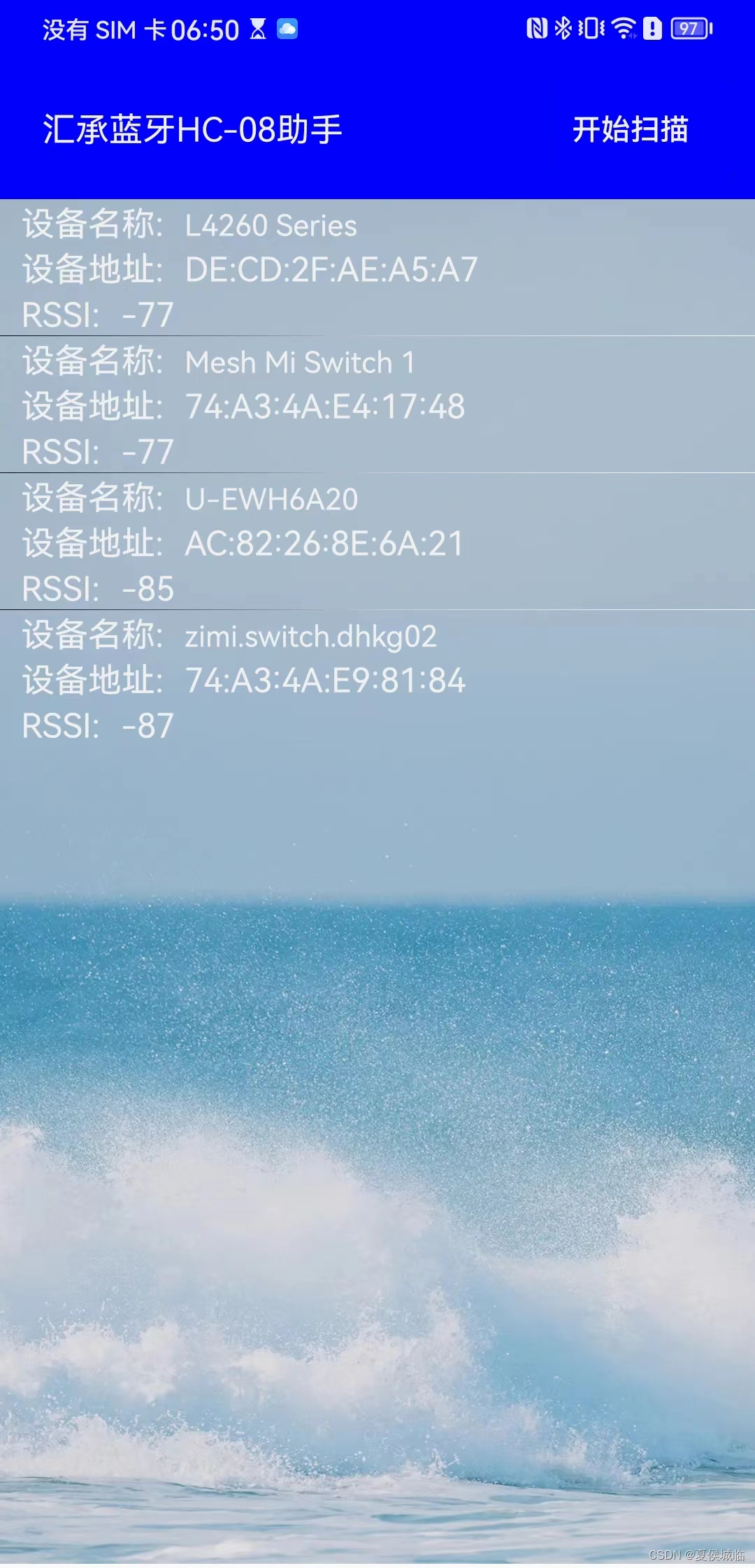
第二个Activity,假设gd32,我们做的是一个智能锁,这里我设计两个按钮,一个开锁,一个关锁,如下:
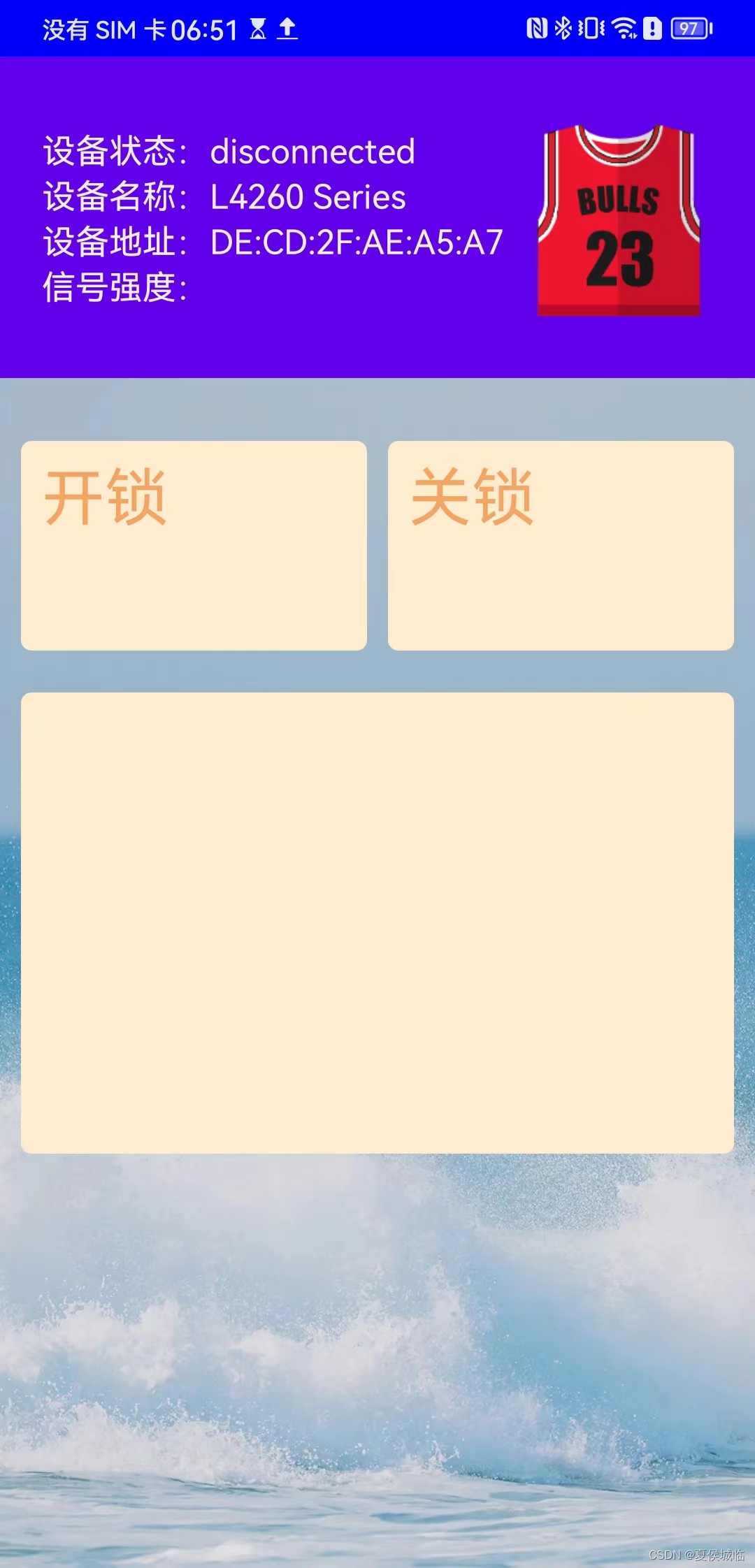
2、关键代码讲解
1、申请权限操作。
AndroidManifest.xml中添加操作蓝牙的权限
<uses-permission android:name="android.permission.BLUETOOTH" />
<uses-permission android:name="android.permission.BLUETOOTH_ADMIN" />
<uses-permission android:name="android.permission.ACCESS_COARSE_LOCATION" />
<uses-permission android:name="android.permission.ACCESS_FINE_LOCATION" />
Activity Oncreate中添加requestPermission代码
void requestPermission()
{
if (Build.VERSION.SDK_INT >= Build.VERSION_CODES.M){
if(ContextCompat.checkSelfPermission(this, Manifest.permission.ACCESS_COARSE_LOCATION)
!= PackageManager.PERMISSION_GRANTED){
ActivityCompat.requestPermissions(this,new String[] {Manifest.permission.ACCESS_COARSE_LOCATION,
Manifest.permission.ACCESS_FINE_LOCATION},2);
}
else{
isHavePermission = true;
}
}
}
加上这个代码,第一次运行时,会弹出一个授权框,如下
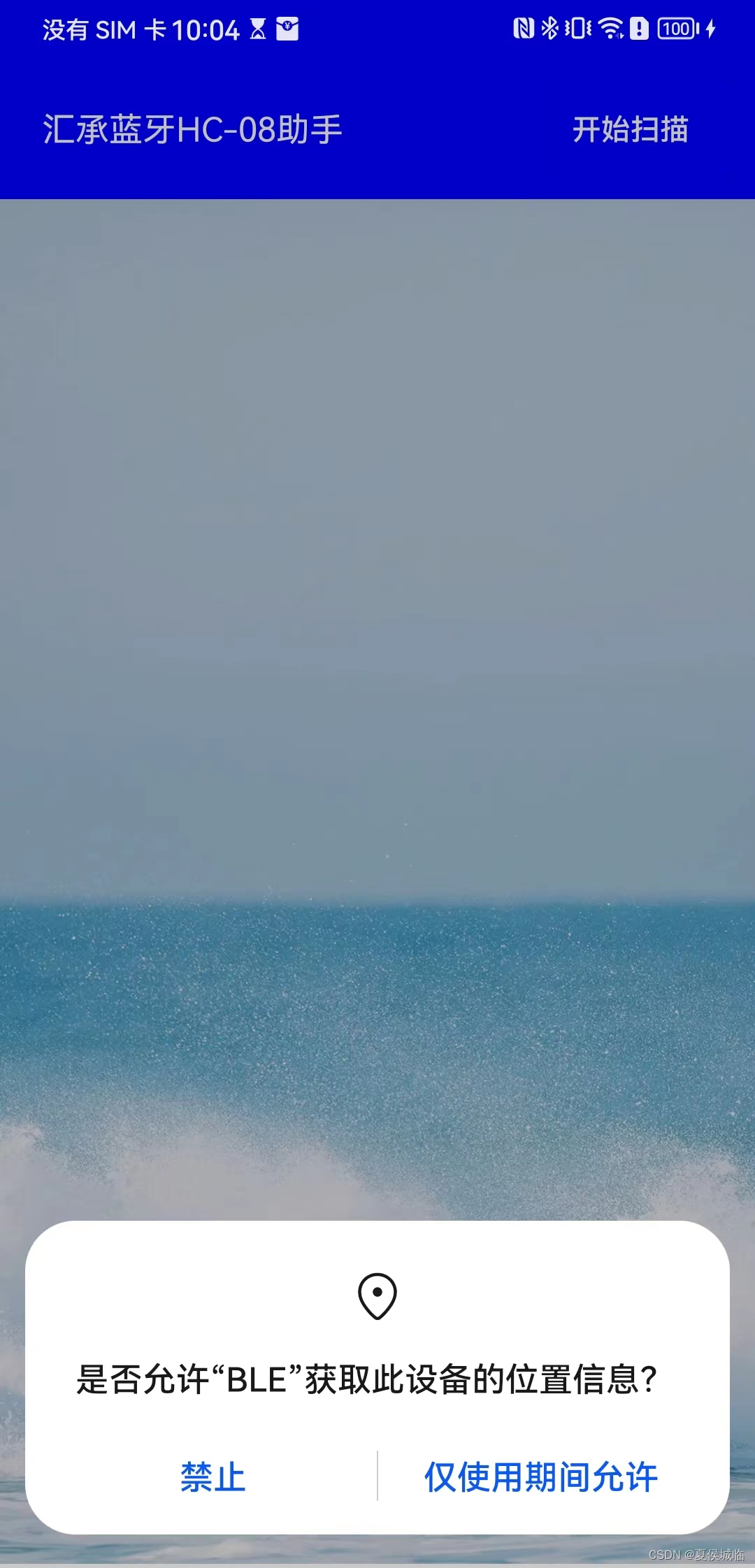
用户点击禁止或者仅使用期间允许后,会掉函数处理如下:
@Override
public void onRequestPermissionsResult(int requestCode, @NonNull String[] permissions, @NonNull int[] grantResults) {
super.onRequestPermissionsResult(requestCode, permissions, grantResults);
if (requestCode == 2){
if ((grantResults[0] == PackageManager.PERMISSION_GRANTED )
&& (grantResults[1] == PackageManager.PERMISSION_GRANTED)){
isHavePermission = true;
// 获得了权限
}else{
// 没有权限
isHavePermission = false;
Toast.makeText(mContext,"no permission",Toast.LENGTH_LONG).show();
}
}
}
2、搜索蓝牙代码
private ScanCallback mScanCallback = new ScanCallback() {
@Override
public void onScanResult(int callbackType, ScanResult result) {
super.onScanResult(callbackType, result);
// 只显示hc-08这个蓝牙设备
if (result != null && result.getDevice().getName() != null) {
//if (result.getDevice().getName().equals("HC-08")) {
mleDeviceListAdapter.addDevice(result.getDevice(), result.getRssi());
mleDeviceListAdapter.notifyDataSetChanged();
//}
}
}
@Override
public void onBatchScanResults(List<ScanResult> results) {
super.onBatchScanResults(results);
}
@Override
public void onScanFailed(int errorCode) {
super.onScanFailed(errorCode);
}
};
开启搜索
mBluetoothLeScanner.startScan(mScanCallback);
停止搜索
mBluetoothLeScanner.stopScan(mScanCallback);
3、连接
连接放在了一个service里,而连接的页面放在了BleConnectDeviceActivity里面。
真正连接的代码如下
public boolean connect(final String address) {
if (mBluetoothAdapter == null || address == null) {
LogUtil.w(TAG, "BluetoothAdapter not initialized or unspecified address.");
return false;
}
if (mBluetoothDeviceAddress != null
&& address.equals(mBluetoothDeviceAddress)
&& mBluetoothGatt != null) {
LogUtil.d(TAG, "Trying to use an existing mBluetoothGatt for connection.");
if (mBluetoothGatt.connect()){
mConnectionState = STATE_CONNECTING;
return true;
} else {
return false;
}
}
final BluetoothDevice device = mBluetoothAdapter
.getRemoteDevice(address);
if (device == null) {
LogUtil.w(TAG, "Device not found. Unable to connect.");
return false;
}
mBluetoothGatt = device.connectGatt(this, false, mGattCallback);
LogUtil.d(TAG, "Trying to create a new connection.");
mBluetoothDeviceAddress = address;
mConnectionState = STATE_CONNECTING;
System.out.println("device.getBondState==" + device.getBondState());
return true;
}:
4、mGattCallbak回调函数
private final BluetoothGattCallback mGattCallback = new BluetoothGattCallback() {
@Override
public void onConnectionStateChange(BluetoothGatt gatt, int status, int newState) {
String intentAction = null;
if (newState == BluetoothProfile.STATE_CONNECTED) {
if (mOnCharacteristicListener != null)
mOnCharacteristicListener.onDeviceConnected(newState);
mConnectionState = STATE_CONNECTED;
mBluetoothGatt.discoverServices();
} else if (newState == BluetoothProfile.STATE_DISCONNECTED){
mConnectionState = STATE_DISCONNECTED;
LogUtil.i(TAG, "Disconnected from GATT server.");
}
}
@Override
public void onServicesDiscovered(BluetoothGatt gatt, int status) {
if (status == BluetoothGatt.GATT_SUCCESS) {
displayGattServices(gatt.getServices());
}
}
@Override
public void onCharacteristicRead(BluetoothGatt gatt,
BluetoothGattCharacteristic characteristic, int status) {
if (status == BluetoothGatt.GATT_SUCCESS) {
LogUtil.i(TAG, "--onCharacteristicRead called--");
byte[] sucString = characteristic.getValue();
String string = new String(sucString);
}
}
@Override
public void onCharacteristicChanged(BluetoothGatt gatt,
BluetoothGattCharacteristic characteristic) {
LogUtil.d(TAG,"onCharacteristicChanged " + new String(characteristic.getValue()));
if (mOnCharacteristicListener != null)
mOnCharacteristicListener.onDataReceive(characteristic.getValue(),characteristic.getValue().length);
}
public void onCharacteristicWrite(BluetoothGatt gatt,
BluetoothGattCharacteristic characteristic, int status) {
LogUtil.w(TAG, "--onCharacteristicWrite--: " + status);
}
@Override
public void onReadRemoteRssi(BluetoothGatt gatt, int rssi, int status) {
// TODO Auto-generated method stub
//super.onReadRemoteRssi(gatt, rssi, status);
LogUtil.w(TAG, "--onReadRemoteRssi--: " + rssi + "status " + status);
}
};
onConnectionStateChange 是连接状态改变时候的回调,这里可以判断连接还是断开。
onServicesDiscovered 是服务搜索完成的回调,可以在完成后,去加载或者打印出所有的服务,
onCharacteristicRead读完数据的回调,但是hc-08读的操作并没有走这里。
onCharacteristicChanged是特征值改变的回调,从hc-08读取数据就是这个回调。
onCharacteristicWrite 写完数据的回调
onReadRemoteRssi是读取信号强度的回调。
5、读取数据。
hc-08是通知过来的数据,也就是gd32那边通过串口写进来的数据,Android app从hc-08传过来的数据,走的是特征值的通知属性,所以我们在读数据之前,要打开通知。
public void setCharacteristicNotification(BluetoothGattCharacteristic characteristic, boolean enabled) {
if (mBluetoothAdapter == null || mBluetoothGatt == null) {
LogUtil.w(TAG, "BluetoothAdapter not initialized");
return;
}
mBluetoothGatt.setCharacteristicNotification(characteristic, enabled);
BluetoothGattDescriptor clientConfig = characteristic.getDescriptor(UUID.fromString(CHAR_DESCRIPTOR));
if (enabled) {
clientConfig.setValue(BluetoothGattDescriptor.ENABLE_NOTIFICATION_VALUE);
} else {
clientConfig.setValue(BluetoothGattDescriptor.DISABLE_NOTIFICATION_VALUE);
}
mBluetoothGatt.writeDescriptor(clientConfig);
}
6、写数据
public void writeSpecialCharacteristic(byte[]data) {
if (mBluetoothAdapter == null || mBluetoothGatt == null) {
LogUtil.w(TAG, "BluetoothAdapter not initialized");
return;
}
mBluetoothGattCharacteristic.setValue(data);
mBluetoothGatt.writeCharacteristic(mBluetoothGattCharacteristic);
}
3、GD32 usart1的回调函数处理。
这里同上,收到什么数据返回什么数据。
void USART1_IRQHandler(void)
{
if(RESET != usart_interrupt_flag_get(USART1, USART_INT_FLAG_IDLE)){
/* clear IDLE flag */
usart_data_receive(USART1);
/* number of data received */
usart1_rxcount = 256 - (dma_transfer_number_get(DMA0, DMA_CH5));
if (usart1_rxcount >0)
{
print_register_value(usart1_rx_buffer,usart1_rxcount);
printf("get data ==%d\r\n ",usart1_rxcount);
usart1_send_string(usart1_rx_buffer,usart1_rxcount);
memset(usart1_rx_buffer,0,sizeof(usart1_rx_buffer));
}
usart_interrupt_flag_clear(USART1,USART_INT_FLAG_IDLE);
/* disable DMA and reconfigure */
dma_channel_disable(DMA0, DMA_CH5);
dma_transfer_number_config(DMA0, DMA_CH5, 256);
dma_channel_enable(DMA0, DMA_CH5);
}
}
4、验证。
点击开锁 ,发送{0x00,0x01,0x02,0x03,0x04}数据,gd32 收到数据后,返还,在App页面上显示 {0x00,0x01,0x02,0x03,0x04}。
点击关锁,发送{0x04,0x03,0x02,0x01,0x00}数据,gd32收到数据后,返还,在App页面上显示{0x04,0x03,0x02,0x01,0x00}。
Android App蓝牙透传
GD32的打印如下:
